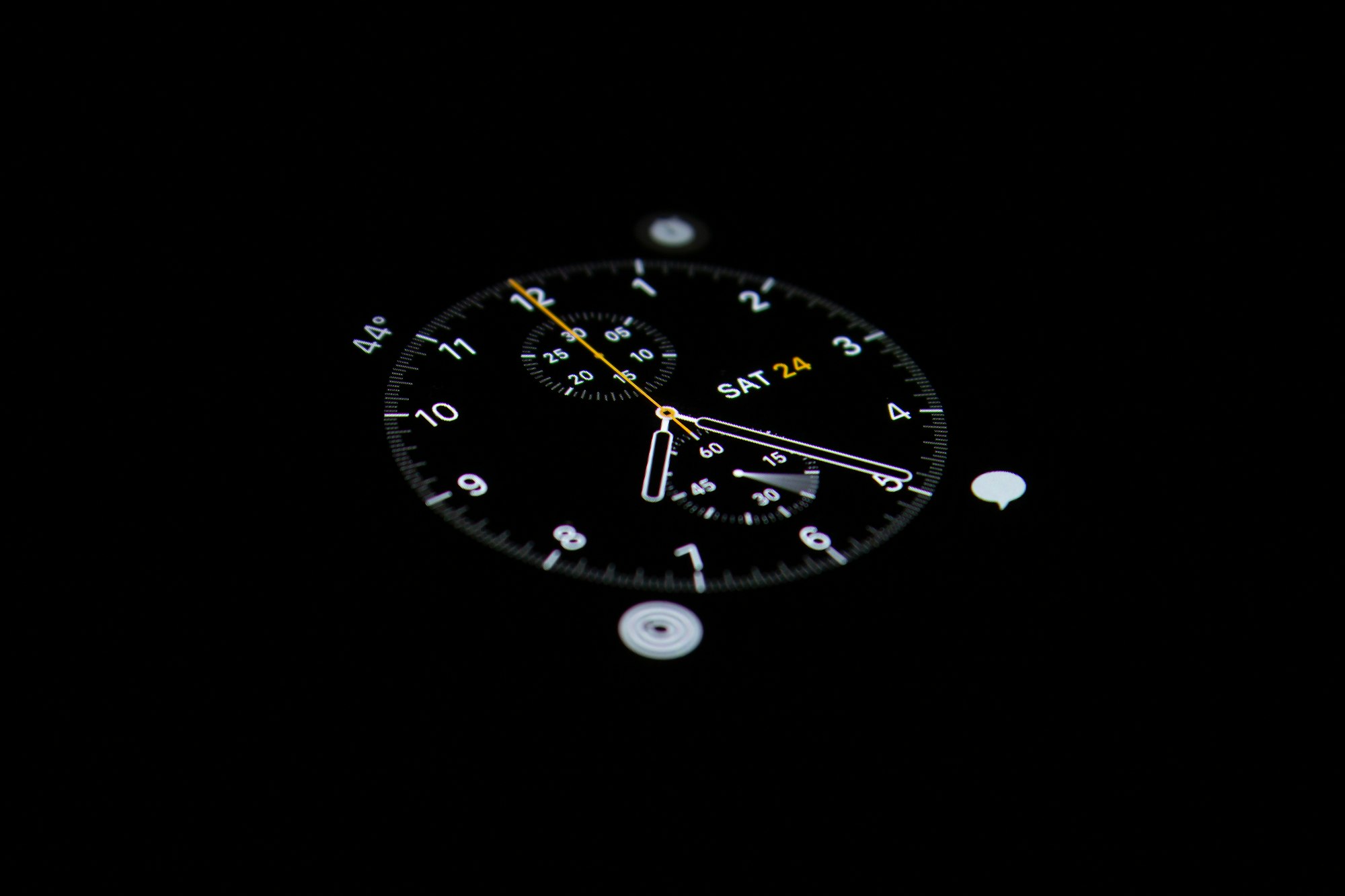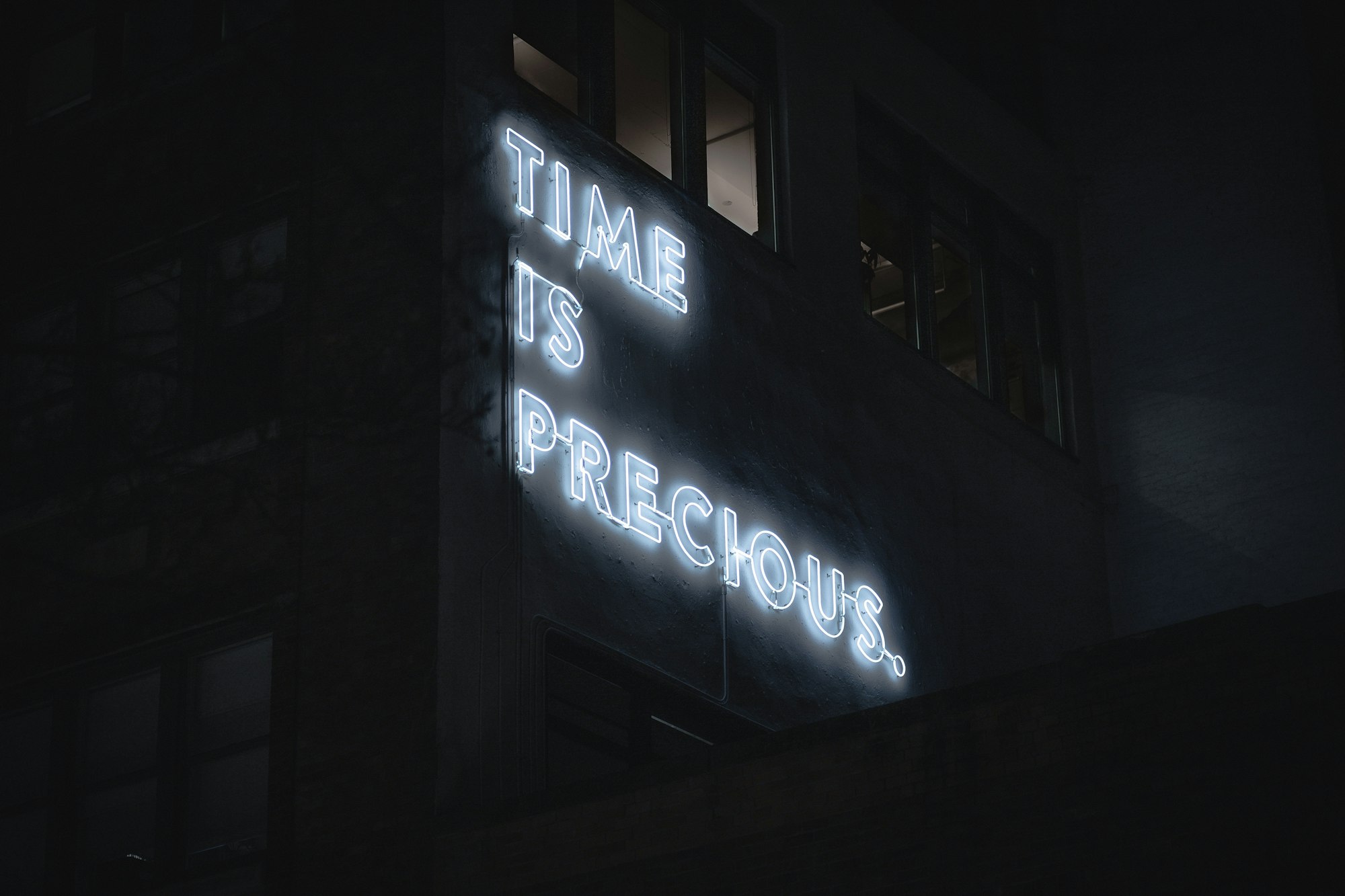Backstage
Take a glimpse behind the scenes of Negative White.
Change
Negative White shifts its approach significantly today—a detailed look at the changes and their reasons.

Today marks a significant change in the way Negative White operates. In this post, I will provide details of the changes and how they might affect you. Moreover, I explain the reasons behind the changes.
Here are the two most important things you have to know right now:
- Negative White moves to a newsletter approach. Every post we publish will also be sent as a newsletter, as we already do with «Weekly5».
- Our current newsletters, «Weekly5» and «Rewind,» will be merged into the «Negative White Newsletter», which will have a dedicated publishing schedule.
The Publishing Schedule
Nobody likes too much uncertainty or being bombarded by emails. Therefore, I have put a strict publishing schedule for the newsletter in place so you always know when to expect something from us in your inbox.
- Tuesday – Slot for premium-exclusive content
- Thursday – Slot for member-exclusive content
- Sunday – Weekly5
As you can see, there are two content slots aside from Weekly5. These slots are optional, as we won’t use them every week.
The Posts You Can Expect
Weekly5 remains unchanged: You will receive a handcrafted selection of five newly released songs that we think are worth your attention. Weekly5 remains free and for everyone.
As a member, you now also receive our member-exclusive stories on Thursdays. These stories dive deeper into a specific topic: an artist, a new release, or provide perspective on developments around music. Sometimes, they also might include a stunning gallery from our talented photographers.
As a premium member supporting Negative White financially, you will receive our most exclusive posts, such as interviews, portraits, and deep analysis pieces. You will receive at least one of these monthly posts on a Tuesday. Additionally, you will get a monthly update on our premium playlists.
Why Are These Changes Coming?
Running Negative White requires much effort, as I have previously made transparent here. It was one of the primary considerations when I relaunched the platform a year ago. It also means that the effort should be focused on the things that matter.
However, since the relaunch, Negative White has crept back to its roots: a very traditional approach to music journalism. As the music industry is changing rapidly, so too has the reporting.
While there might be room for a classical magazine approach, it is not the right fit for a largely one-person operation. As a result, the current state of Negative White is a bit of everything and nothing properly.
The new approach forces me to focus on less but with higher quality, on stories you won’t read elsewhere, on unique perspectives.
The fusion of the two newsletters further simplifies the production process, lifting a bit of the burden and giving me more time for research and writing.

Alongside what you could describe as the new content concept comes a change to the website—a new design that reflects these changes and directs the attention to single posts rather than a traditional overview.

As with any significant change, I might have overlooked something. However, I see change as not being a single moment but a constant process. With today’s announcement, this process starts more than it is finished, so there might be things that still need polishing.
But for now, I leave you with a heartfelt thank you for your curiosity and support so far in Negative White’s journey. And I hope you will stick around a bit longer for the ride.
Can A Review Kill An Artist?
There is a heated discussion about reviews in the tech gadget bubble and whether they can kill companies. Our editor looks reflects on his role as a music reviewer.
If you dip your toes into the tech and gadget bubble here and there, you probably notice a heated discussion around reviews. More specifically, the debate revolves around the question: Can a review kill a company?
At the centre of the discussion is Marques Brownlee, aka MKBHD, a YouTuber and one of the most prominent tech reviewers. Two of his reviews—one of an electric car and one of the Humane AI pin—are the main points of criticism towards the influencer. Brownlee later gave more perspective in a video but did not walk back his reviews.
I am always intrigued by these sorts of meta-discussions. For one, they are essential to build media literacy. On the other hand, they offer insight into how some of the most influential people perceive their roles as reviewers.
Highly Subjective
But first and foremost, it prompts me to reflect on my own role as music critic, reviewer, and curator.
The role of music critics has always been controversial, but it has undoubtedly lost relevance with the shifts in the industry. While previously often regarded as buying advice, a bad review could significantly impact sales.
The Most Idiotic PR Email We Ever Received
From its initial premise to the execution and intention: This is undoubtedly the most trash PR spam we received so far.
As a music magazine, we receive dozens of emails every week promoting new music, pushing news, and providing reporting opportunities. Combing through this never-ending flood in the inbox is maybe the most tiresome task running Negative White.
However, once in a while, a PR email stands out—and today’s contestant is so bad, so moronic, that we can’t withhold you of its stupidity. Let’s start with the headline:
«Your taste in music invites bacteria into your home.»
Intriguing, without a doubt. So, what’s lying underneath this bold claim?
«Are your favourite Spotify playlists turning your home into a breeding ground for bacteria? Experts at Company X sound the alarm and warn of a surprising link between music streaming habits and household hygiene.»
Yes, I’ve censored the company’s name for reasons I’ll explain shortly.
But the email goes on with a quote by the company’s CEO, who cannot be found anywhere on the web: «Different music makes people feel different things—that’s a fact. What is surprising, however, is how these feelings translate into behaviours that change the microbiome of our environment.»
The PR article then explains how it works, claiming the following:
- Relaxing music reduces the heart rate, and we move more calmly, allowing dust and bacteria to settle.
- Lively music raises the heartbeat, and we move more hectically, which then stirs up dust and displaces bacteria so that they may find more suitable breeding grounds.
- Music can also affect bacteria that live on our skin. Emotional responses to music can make us sweat, creating a moist environment where bacteria like to colonise.
The article then suggests ways to mitigate the risks with handy tips like balanced playlists, regular dusting, and skincare. Thanks so much; what would I do without you?!
AI-generated SEO Bullshit
The article’s premise is already so idiotic that I had to look deeper at the article and the company behind this «research paper». Yes, they really call it that.
The text is stuffed with obvious keywords like Spotify or organisations like Harvard Health, The Daily Beast, and CNN, which apparently should provide some legitimacy but are only in the article to optimise the text for search engines. The general practice is called SEO, Search Engine Optimisation.
The article, written in German, clearly shows signs of being generated with an AI tool. The sentence structure is unnecessarily complicated and weird, and the overuse of bullet points is also something AI-generated text is prone to.
A short experiment with ChatGPT offers similar results in text as the email we received, boldly voicing claims of research, studies, and experts—obviously without any sources.
A Cycle of Garbage
The email came from an address that leads us to a crappy content factory called WireRelay which pumps out garbage like «Experts warn: answering calls with your right ear could cause brain damage!».
But the most obvious giveaway that we deal with some otherworldly bullshit here is Company X. What is this company actually doing?
They offer AI chatbots for influencers where users can pay $10 to chat with an AI version of their influencer. So far, they offer two influencers you can chat with. Impressive! Nothing in the article remotely has to do with their business, nor do they have any music, hygiene, or health expertise.
Unfortunately, a quick search reveals that this article has been published several times by self-proclaimed media outlets, perpetuating the trash. Some even cared so little that the final ask in the email was included: «Please refer to URL of Company X if you decide to use the research.»
It’s a whole shitty ecosystem: content farms promoting fake business with fake research published by fake media websites.
I Tracked the Time I Worked for Negative White
For the past six weeks, I tracked how much time I spent working for Negative White. Here is the breakdown.
Running an online magazine like Negative White takes a lot of effort. It not only costs money but also takes a lot of time: Attending concerts, listening to new releases, researching, reading, writing, editing, and distributing. There is a reason why most music blogs are volunteer-run: Financing this operation with fair wages is incredibly hard.
Running an online magazine like Negative White takes a lot of effort. It not only costs money but also takes a lot of time: Attending concerts, listening to new releases, researching, reading, writing, editing, and distributing. There is a reason why most music blogs are volunteer-run: Financing this operation with fair wages is incredibly hard.
While it is reasonably easy to track the financial costs for Negative White, the time investment is exponentially more complex.
It is journalism's nature to constantly loom somewhere in consciousness, hunting for the next story. It makes time tracking challenging: When you see a potential story on social media, is it already counted as work?
I have previously done rough estimations of how much time Negative White requires. However, they remained rather vague. So, I set up a system to track the time I spend working for the platform as accurately as possible.
Today, six weeks later, it is time for a preliminary analysis.

In the past 42 days, I tracked 52 hours and 25 minutes of work for Negative White, which means I spent more than a full working day every week.
The time tracking system entailed eight categories, distincting various tasks necessary to keep the blog's engine running. Here are the individual breakdowns:
Writing: 20 hours 30 minutes
Fortunately, writing took up most of my time. It includes everything from research to actual writing, editing, and production process for almost every article published during that time. However, I excluded the newsletters «rewind» and «Weekly5» as they have their own categories.
The time invested resulted in 22 articles, which amounts to less than an hour per story. However, some were short news posts, while others took significantly longer. Also, the work for two of these stories started before the time tracking.
Weekly5: 14 hours 5 minutes
Rather unsurprisingly, the weekly song curation also took a large chunk of my time. I have already described the process for Weekly5 in great detail. The time tracking concludes that I spent roughly 2 hours on each of the six published editions.
Rewind: 5 hours 40 minutes
During the tracked period, the bi-weekly newsletter «Rewind» switched frequency to a weekly schedule. I wrote five editions and spent about an hour on each one. However, this category is undoubtedly the most unreliable since I did not track content curation from other sources.
Administration & Planning: 5 hours 20 minutes
Here is the most mundane category: cleaning up the email inboxes, managing the content schedule, and other tasks in the broad scheme of «stuff and things». It is not fun but necessary nonetheless.
Concerts: 4 hours
Again, the time tracking here is only a rough estimation of about 2 hours per evening—one was the concert of Moyka, the other one of Son Mieux. It only entails attendance, but neither travel time nor writing.
Social Media: 2 hours 5 minutes
Today's necessary evil: Managing accounts on several social media platforms to distribute and promote our content. Currently, Instagram grabs most of this time.
Archive Migration: 30 minutes
Shamefully, there was little time I could dedicate to moving the archive migration forward.
Technical Updates: 15 minutes
Sometimes, our website needs some maintenance work, but thankfully, it is almost always an easy and quick task.

Now, what can we take away from all these numbers?
My tasks as editor and only writer at Negative White amount to a good 20% position. Since I work full-time, I distribute this workload throughout the week, often early mornings and late evenings, but also on weekends.
If I reduce my workload in the job to 80% and invest a day into Negative White without taking a financial hit, the magazine would need to generate around $1,520 before taxes every month—additionally.
Then, the total running costs would increase to about $20,000 annually, and 363 premium subscribers ($55/year) are needed to cover these costs. It is not a lot of people, but at the same time, it is a lot. You can calculate the financial impact of a full-time employee yourself.
Like Negative White, most music blogs out there in the vast sea of the internet are run voluntarily—maybe with some form of small revenue streams to cover some of the costs, but nowhere near enough to pay salaries.
Managing a serious blog on any subject, however, takes a lot of time, as my time-tracking experiment showed.
The problem inherent with this setup is its high insecurity: As the work does not pay for anything but is sustained solely by passion, it is subject to drastic deprioritisation if personal circumstances change. Maybe the editor starts a family, perhaps the job gets more demanding, or maybe the balance between creative tasks and administrative chores gets off. The latter two reasons were a driving force for Negative White's hiatus from 2020 to 2023.
No, there is no satisfying conclusion to this problem or this story. If I had it, I would be floating in money or writing a glorious takeaway lesson for you.
Instead, I can leave you with one last number: Writing this article took me about 3 hours. If you think it was worth your time, consider becoming a premium subscriber and support Negative White financially. Thank you.
Our Goals For 2024
Here is a quick overview of the goals we set ourselves for this year.
◁◁ rewind: Dive Deeper Into Music
Our bi-weekly newsletter not only rounds up our best stories but dives deeper into the trends shaping music and the industry.
Music constantly evolves, subject to new trends, industry disruption, and societal change. With our bi–weekly newsletter «rewind», we provide you with perspectives, orientation, and opinions on these matters.
The newsletter lands exclusively in your inbox every other Thursday and isn't published on our website.
Alongside deeper dives into current music and industry topics, you also receive a roundup of our best reporting and curated stories, videos, and podcasts by other media outlets.
Still not sure? Read an example here.
2023 Report
With our comprehensive 2023 report, we provide transparency and accountability for our activities during the last year.
As an independent platform, we believe transparency is crucial to good reporting and building trust. It is our obligation to share our successes and failures with you and provide details so you can hold us accountable.
2023 has been a year of transition for this platform, as previously stated in our «letter from the editor». The standalone Weekly5 service was re-integrated into a revamped version of Negative White, the online magazine where the playlist originated.
The transformation was followed by a variety of changes, adjustments, and experiments. However, the goals remained the same: To provide excellent music journalism in harmony with our values and reach financial sustainability.
Weekly5: 47% Female Artists
Setting the ambitious goal of financial sustainability at the end of 2022, Weekly5 started as a paid service in 2023. However, when Negative White relaunched, it returned to a free offer again, providing a platform for upcoming artists.
In 2023, we curated 30 editions featuring 150 songs from 137 artists. While trying to provide as many different artists a platform as possible, one band was featured three times: Swiss indie pop upstart Soft Loft.
Of the 137 artists, 65 were female or female-fronted bands, which amounts to almost a 50:50 ratio or 47% of featured artists.
As Negative White is based in Switzerland, we also try to highlight Swiss artists. 38 artists have their origins in the country.
Using a playlist analysing tool, Weekly5's 2023 playlist shows a moderately diverse genre distribution:
- 28% Rock
- 20% Electronic
- 18% Pop
- 17% Folk/Acoustic
- 6% Metal
- 11% Others like R&B, Hip-Hop, Jazz, or Blues
The analysis also shows that the playlist mainly features so-called «obscure» songs. It means that the curated tracks are not very popular on Spotify. Therefore, we fulfil the promise of featuring new and upcoming as well as underground artists.
Furthermore, our editor, Janosch Troehler, pledged to buy every featured song if it is available on Bandcamp. The count shows that out of the 150 songs, 72 have been purchased and were directly financially supported.
A Year of Transition
A letter from the editor.

